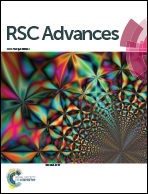Non-destructively sensing pork quality using near infrared multispectral imaging technique
Abstract
Near infrared multispectral imaging system (MSI) based on three wavebands—1280 nm, 1440 nm and 1660 nm—was developed for the non-destructive sensing of tenderness and water holding capacity (WHC) of pork. Multispectral images were acquired for pork samples, and the real tenderness (Warner-Bratzler Shear Force, WBSF) and WHC (cook loss, CL) of these samples were simultaneously determined using traditional destructive methods. The gray level co-occurrence matrix was used for the extraction of characteristic variables from multispectral images. Next, ant colony optimization combined with back propagation artificial neural network was used for modeling, which achieved good performance compared with the other two commonly used algorithms. The correlation coefficient and the root mean square error in the prediction set were achieved as follows: Rp = 0.8451 and RMSEP = 0.9087 for WBSF; Rp = 0.9116 and RMSEP = 1.5129 for CL. This work adequately demonstrates that the MSI technique has a high potential for non-destructive sensing of pork quality attributes combined with an appropriate algorithm, thus facilitating a simple and fast method of meat analysis.


 Please wait while we load your content...
Please wait while we load your content...